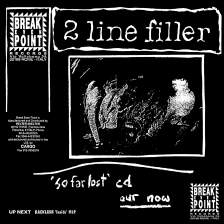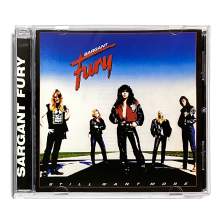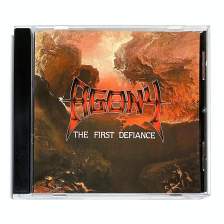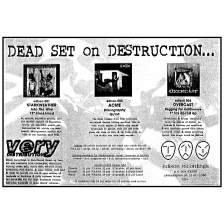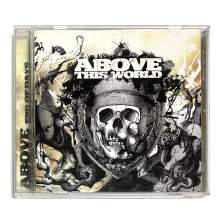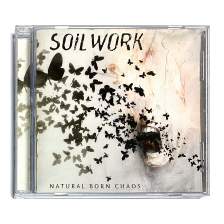
Hardcore has a reissue problem, and that problem is that there simply aren't enough hardcore reissues. There are multiple metal-centric labels whose sole purpose is reissuing rare, out-of-print, and/or never-before-heard recordings; and literally hundreds of metal bands that like 12 people have ever heard of have had such an honor bestowed upon them. Hardcore? Not so much. I mean, shit, here we are 27 years after vocalist Marco "Minus" Rodriguez parted ways with Brooklyn, NY's often imitated/never replicated metalcore trailblazers Merauder—an incredibly significant outfit whose influence remains prevalent to this day (we're talking about a band so beloved that younger up-and-comers have gone to the lengths of covering tracks previously only available through old live sets on YouTube)—and most of these recordings are just now being prepped for a proper widespread release!?
Hence, The Minus Years is a big fuckin' deal. A cooperative effort between a number of international outlets—with Upstate Records leading the charge—this has gotta be one of the most important '90s hardcore reissues ever. Hands down. Remember, there was a time when you couldn't just go on YouTube and type in "Merauder Minus demo" and get an instant taste of what this fabled era had to offer. I probably got into Merauder in 1996 or so, and it took me damn near a decade to finally get my hands on mp3s from that 1993 demo to hear Minus' vocals for the first time. 16 years later, I'm just as giddily excited to get the chance to hear even more documentation from the Minus days—presented in fine form, no less.
The 1991 sessions that kick things off demonstrate that Merauder was a force right from the start, including a number of future classics such as "Fear of Sin" and "Besiege the Masses." It must be noted, however, that these renditions are slightly faster—thrash-leaning with just a smattering of BK groove—complete with ripping solos, etc. Were I hearing this with no context, I think I'd actually refer to it as thrash metal. There are subtle differences in a number of tracks as well, most notably the dual guitar harmonies in "Besiege the Masses." The exclusive appearance of "Extreme Fallacy" is the thrashiest tune of the bunch, though not without a sick breakdown of its own.
I'm not clear on the lineup/recording credits for the '91 demo, but I've seen data online that suggests "Karate" Chris Bozeth (guitar) and Eamon Carney (bass) were still with Merauder at that time. By 1993, however, it was Minus fronting the lineup that would eventually be responsible for Master Killer: guitarists Javier "Sob" Carpio (R.I.P.) and Anthony Muccini, Rick Lopez (bass), and Vinnie Vitale (drums). [Edit: It seems that the 1991 demo was recorded in Brooklyn at Sty in the Sky, and Anthony Muccini had already replaced Chris Bozeth by that time. Source.]
The most widely available of the Minus recordings, the '93 sessions were laid down at Fastlane Studios in Brooklyn, and further cemented the Merauder we all know and love—opening with instant classic "Life is Pain," followed by re-recordings of three tracks from 1991. Just a touch slower, there's more of a hardass slam to the vibe; plus a seething, snarling attitude to the vocals. The guitar solos are given more breathing room—which allows that droning, melodic style to shine through—and the bass lines are even more roving and wild. This take on "Fear of Sin"—which was only on certain copies of the cassette demo—hints at what's to come. I would guess it's from a different recording session due to its thicker tone and the tempo's harder-hitting chug.
By now, everyone reading this has certainly already heard the first three tracks from the 1994 promo (above), which debuted earlier this week. For my money, they're the pinnacle of this already stellar collection, offering two new (at the time) compositions and a "Life is Pain" makeover. Right off the bat, the mix is more balanced, and again the pace is a hint slower for maximum unrelenting badassery. Minus' vocal approach herein is total gold as well—a little added bitterness for full-on aggression and menace. "Bleed" (a.k.a. "Demented Minds") is another non-album track, and fuckin' hell... why!? I mean, holy shit, that intro alone is complete destruction. Instantly one of my all-time favorite Merauder cuts. Unbelievable.
With the final three now-classic compositions—"Master Killer," "Downfall of Christ," and "Time Ends"—you start to realize that 80% of Master Killer was created during the Minus era, and while I can't say that I have a preference, it sinks in as to why so many who were there and living it at that time prefer Merauder's Minus iteration. Again, I'm guessing this was a different session, because the tempos feel about even with the album versions, and Minus' vocals take a gruffer approach more akin to what Jorge Rosado would later provide. This set presents the tightest/thickest production herein, and as a result I have to point out that a highlight of these demos is that the bass has more of a presence in the mix, which really highlights just how killer the bass work is. It's pretty damn interesting to hear the bit-by-bit progression over the course of these 15 songs/57 minutes.
Another cool little tidbit about this collection is that it was sourced with the help of Rich O'Brien from Darkside NYC, who provided the hookup on the early demo tracks; and Stigmata's Bob Riley, who came through with the uncirculated 1994 promo. Speaking of which...
Mario Cangemi (Upstate Records) Speaks With Bob Riley (Stigmata) on the Stigmata/Merauder Connection and the Roots of Merauder's Elusive 1994 Promo
Mario: Cranial Abuse was one of the first hardcore shows I ever attended. Being a metal kid before getting into hardcore and watching Cranial Abuse grow into Stigmata, in my opinion Stigmata was one of the first crossover bands in the mid- to late-'80s that really set the bar for other crossover bands. Was there a conscious effort to bring metal and hardcore together, or was it something that just naturally evolved?
Bob: I know it was a natural progression for us, as we were metalhead kids before we were hardcore, so it definitely was gonna happen. Especially because when we all got into hardcore and going to shows, we didn't stop listening to metal. No way. So, it became a melting pot. For a while, we couldn't play hardcore shows 'cause we were too heavy, and we couldn't play metal shows 'cause we were too hardcore. Sounds weird, but it's true.
Mario: The early days of the Albany/Troy hardcore scene were memorable, to say the least. It felt like the Albany/Troy scene rivaled what was going on at the time in NYC. What were some of your fondest moments, shows, and clubs that you played?
Bob: Well, to begin with, shows were at the VFW hall on Washington Ave. in Albany. I saw so many cool shows there. Even got to open for Bl'ast, C.O.C., and D.R.I. there in 1986. After an incident where some asshole smashed up the bathroom, shows moved to Club 288 on Lark Street. Saw a lot of cool shows there also. I'll never forget those summers. I did a lot of growing up those couple of years. Every early show was nothing but fun! Our parents would take turns dropping us off and picking us up. I'm sure we were a pain in the ass [laughs]. Then, as we got older, we'd take buses; and then finally one of us got a car and we would all pile in. Even if we'd never heard of the bands, we would go just to hang out. Skateboard outside. It was awesome. It was exciting, 'cause it wasn't like metal shows, the members of the bands would be hanging out right with us!
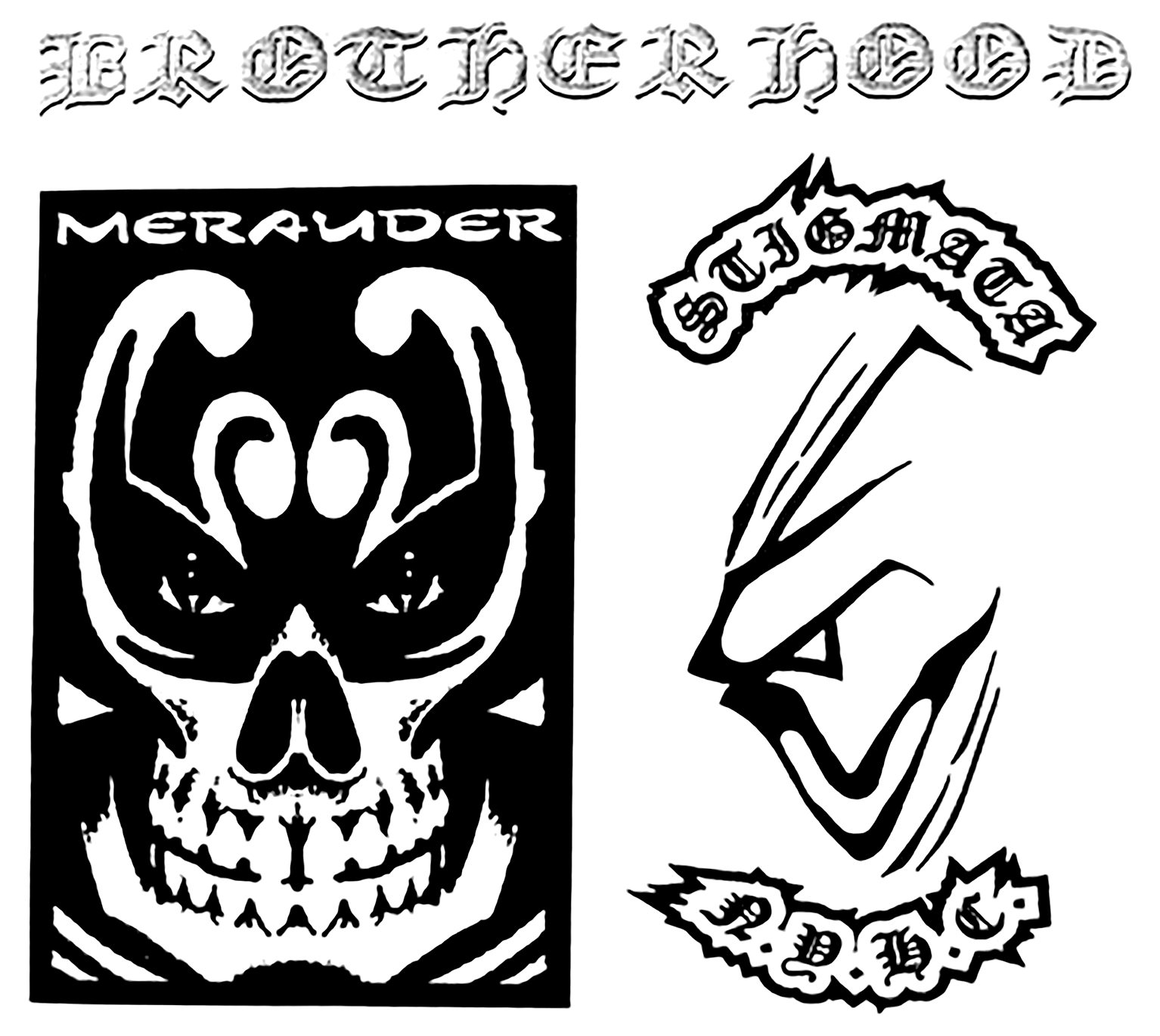
Mario: I see and hear a lot of similarities between Merauder and Stigmata. Tell us about the first time you saw Merauder? What was your first impression? Did you think they would take off like they did?
Bob: Yeah, Stigmata was definitely part of the new metallic hardcore-sounding bands that were coming out—Merauder, All Out War, Confusion, Starkweather, and many others. The first time I saw Merauder, I was blown away. Not shocked, because their reputation definitely preceded them, and I had already met Minus at a Carnivore show in Brooklyn at L'Amour. He had broken up a fight between a friend of mine and [Life of Agony vocalist] Keith [now Mina] Caputo, but that's another story [laughs]! But, I was immediately hooked and became fast friends with the guys.
Mario: Over the years, it's clear the bond between Merauder and Stigmata grew. You guys put out the Brotherhood split in 1995—which I think is absolutely killer, by the way—but the question I have is: tell us how you came into possession of the 1994 Merauder promo? What's the story behind that promo? As I understand it, it was never officially released?
Bob: Yeah. If Merauder came upstate, they always stayed at my house, or I would find them a place to stay. It was always a party! Also, whenever I could, I would go on the road with the guys. Help out and just kinda be a roadie. Also, I would go down and stay at Minus' house, which later became Stigmata guitarist Mike Maney's house. I would go down and stay at Sob's house a lot—he liked going to record stores and toy stores, which is what I live to do. Well, at one point they fell out with their then-manager and he knew I was good friends with all of the guys, so he gave me all the DATs of all the demos. So, I brought them to the studio, made a tape copy for myself, then handed them over to [current Merauder vocalist] Jorge [Rosado] where they belonged.
Mario: Last question: I often see on Drew Stone's New York Hardcore Chronicles most people call out Minus as the reigning champion of the pit. Up here (Albany), I remember Ponfo (R.I.P.) just clearing out the damn place—probably the original reason for the "horseshoe" we see today at shows. In your opinion, who wins? Any particular memories about both?
Bob: Well, bro... Minus, Sob, and Ponfo were all brutal in the pit. It definitely would have been interesting seeing those three go up against one another [laughs]!
When you hear about reissues like this coming together, it's hard not to worry about, "How rough are these old tapes gonna sound?" But, I'm telling you, as touched on previously, I'm pretty blown away by how solid this stuff comes across. Sure, there are a few quick little dips 'n' drops here and there, but I mean quick. My ears are pretty finicky about that shit, and in this case they don't disrupt the listen at all. Perhaps that's in part due to the fact that the material is just so damn strong, but the bottom line is that you'd be hard-pressed to find decades-old tapes that still sound this nice. That's another reason why releases like this are so crucially important: all it takes is one freak accident for the lone remaining copy of rare recordings to be lost forever. Thanks to The Minus Years, that ain't gonna happen here.
Another point that makes this release superior to some other quality hardcore reissues that have materialized in recents years is that it's not just gonna be a super-limited LP. Between Upstate Records, Generation Records, Coretex Records, RevHQ, Retribution Network, Static Era Records, and Blood Blast Distribution, there will be five different colors of vinyl, U.S. and Japan CD pressings, cassettes, and the obligatory digital distribution channels as well. If you're content with streaming, you'll be good to go, but if you want to hold something proper in your hands, pre-orders begin this Friday, March 12. All that being said—especially if you're a vinyl hound—I really think this thing might be gone in a flash, so... I'd highly recommend following Upstate Records on Instagram, Facebook, or Twitter, and pay attention. If you slack off, you might be outta luck...
Huge respect to everyone involved in making this project come to fruition, and I sincerely hope that more hardcore bands—legends and unsung gems alike—will be granted the opportunity for their recordings to be properly preserved and appreciated in this manner moving forward!


